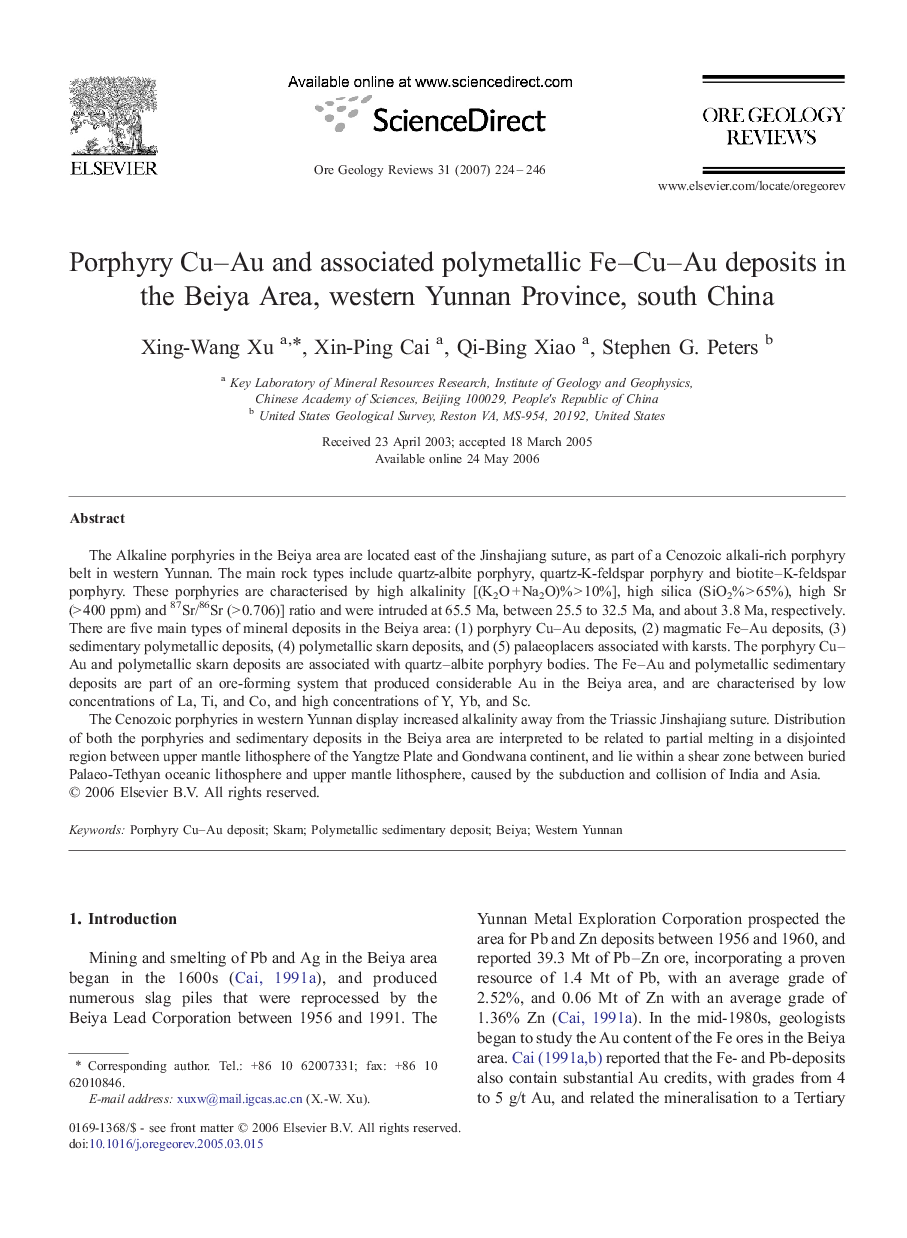| Article ID | Journal | Published Year | Pages | File Type |
|---|---|---|---|---|
| 4697954 | Ore Geology Reviews | 2007 | 23 Pages |
The Alkaline porphyries in the Beiya area are located east of the Jinshajiang suture, as part of a Cenozoic alkali-rich porphyry belt in western Yunnan. The main rock types include quartz-albite porphyry, quartz-K-feldspar porphyry and biotite–K-feldspar porphyry. These porphyries are characterised by high alkalinity [(K2O + Na2O)% > 10%], high silica (SiO2% > 65%), high Sr (> 400 ppm) and 87Sr/86Sr (> 0.706)] ratio and were intruded at 65.5 Ma, between 25.5 to 32.5 Ma, and about 3.8 Ma, respectively. There are five main types of mineral deposits in the Beiya area: (1) porphyry Cu–Au deposits, (2) magmatic Fe–Au deposits, (3) sedimentary polymetallic deposits, (4) polymetallic skarn deposits, and (5) palaeoplacers associated with karsts. The porphyry Cu–Au and polymetallic skarn deposits are associated with quartz–albite porphyry bodies. The Fe–Au and polymetallic sedimentary deposits are part of an ore-forming system that produced considerable Au in the Beiya area, and are characterised by low concentrations of La, Ti, and Co, and high concentrations of Y, Yb, and Sc.The Cenozoic porphyries in western Yunnan display increased alkalinity away from the Triassic Jinshajiang suture. Distribution of both the porphyries and sedimentary deposits in the Beiya area are interpreted to be related to partial melting in a disjointed region between upper mantle lithosphere of the Yangtze Plate and Gondwana continent, and lie within a shear zone between buried Palaeo-Tethyan oceanic lithosphere and upper mantle lithosphere, caused by the subduction and collision of India and Asia.
